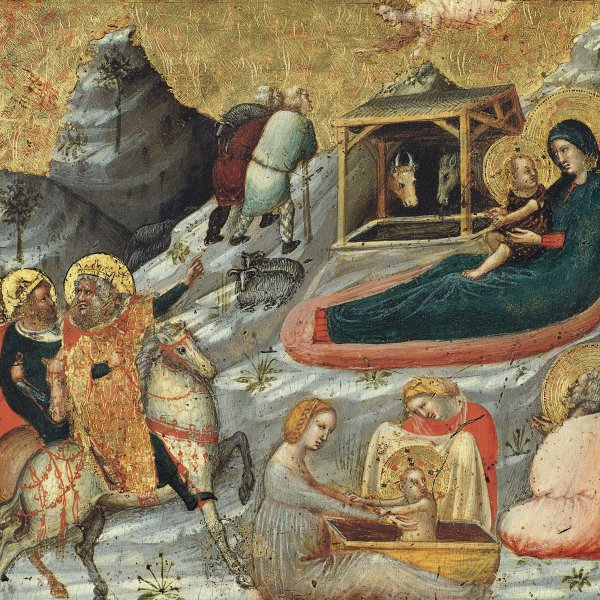Pietro da Rimini
Active ca. 1315-35
The name “Petrus Arimino”, thought to refer to Pietro da Rimini, appears on a crucifix in the chiesa dei Morti in Urbania. It was also to be seen on a fresco of Saint Francis in the church of San Nicola in Jesi, dated 1333, which was subsequently moved to the Franciscan monastery of Montottone. Also attributed to the artist is a polyptych for the high altar of the monastery church of the Eremitani in Padua (now lost), and a cycle of frescoes in the cloister of that monastery (now Museo Civico, Padua). Executed in collaboration with Giuliano da Rimini in 1324, the polyptych for the Eremitani is signed “Petruccio da Rimini”. The artist probably also worked in Ravenna, where he executed some frescoes for the church of San Francesco and the church of Santa Clara (now Museo Nazionale, Ravenna). Frescoes in the refectory of the abbey at Pomposa, dated around 1318, in the apse of San Pedro en Sylvis near Bagnacavallo, for the Cappellone in the church of San Nicola en Tolentino, and for the church of Santa Maria en Porto Fuori have also been attributed to the artist, although with some reservations. In addition to these fresco cycles, Pietro da Rimini also painted a series of small devotional works now to be seen in museums and private collections, including The Pietà (Musée du Louvre, Paris).
Pietro da Rimini was an important artist in the region along the Adriatic coastline during the first half of the 14th century. His work combines the most significant stylistic elements of painting in Rimini at that period with aspects of Florentine, Sienese and Italo-Byzantine painting. His style represents a masterly combination of dramatic expression and emotion with purely decorative elements.
Pietro da Rimini was an important artist in the region along the Adriatic coastline during the first half of the 14th century. His work combines the most significant stylistic elements of painting in Rimini at that period with aspects of Florentine, Sienese and Italo-Byzantine painting. His style represents a masterly combination of dramatic expression and emotion with purely decorative elements.





